10 best places to visit in Delhi
10 best places to visit in Delhi
10 places to visit in Delhi, India’s vibrant capital, is a city brimming with historical grandeur and modern charm. Start your exploration at the Red Fort, a UNESCO World Heritage Site renowned for its majestic red sandstone walls and historical significance. Nearby, Jama Masjid, one of the largest mosques in India, showcases stunning Mughal architecture. Don’t miss the Qutub Minar, another UNESCO site, celebrated for its towering height and intricate carvings. Humayun’s Tomb offers a glimpse into Mughal architectural elegance with its beautiful gardens and grand tomb. For a touch of spirituality, 10 places to visit in Delhi, visit the Lotus Temple, known for its lotus-shaped design, or the Bangla Sahib Gurudwara, a serene Sikh temple offering community meals. India Gate, a solemn war memorial, is perfect for leisurely strolls amidst its lush surroundings. Explore the grandeur of Rashtrapati Bhavan, the President’s residence, with its impressive architecture and gardens. Dive into India’s cultural heritage at the National Museum, which houses a vast array of artifacts. Lastly, the Akshardham Mandir impresses with its stunning contemporary architecture and engaging cultural exhibits, making it a must-visit for a deeper understanding of Indian spirituality and artistry.
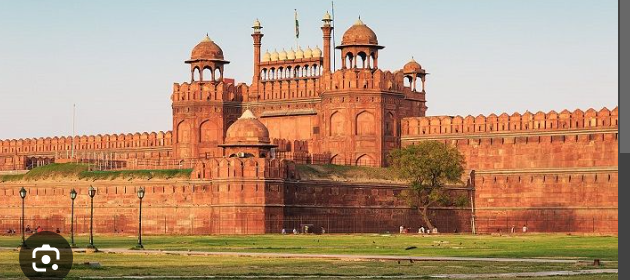
10 places to visit in delhi. The Red Fort, an iconic symbol of India’s rich history, stands majestically in the heart of Delhi. Constructed in the mid-17th century by the Mughal Emperor Shah Jahan, this grand fortress is renowned for its striking red sandstone walls and elaborate Mughal architecture. Encompassing an impressive area, the fort features a series of exquisite palaces, pavilions, and gardens, with notable structures such as the Diwan-i-Aam (Hall of Public Audience) and the Diwan-i-Khas (Hall of Private Audience) showcasing intricate carvings and opulent designs.10 places to visit in Delhi. The Red Fort not only served as the main residence of Mughal emperors but also played a pivotal role in India’s struggle for independence, symbolizing both the grandeur of the Mughal era and the resilience of the Indian spirit. 10 places to visit in Delhi.Today, it stands as a UNESCO World Heritage Site and a popular tourist attraction, drawing visitors from around the globe to marvel at its historical significance and architectural splendor.
INDIA GATE (DELHI)

10 places to visit in delhi. India Gate, an enduring emblem of national pride, stands prominently in the heart of New Delhi. Designed by Sir Edwin Lutyens and completed in 1931, this war memorial commemorates the soldiers of the British Indian Army who sacrificed their lives during World War I and the Third Anglo-Afghan War. The structure, inspired by the Arc de Triomphe in Paris, features a majestic arch of sandstone adorned with the names of fallen soldiers inscribed on its surfaces. At its base, an eternal flame—the Amar Jawan Jyoti—honors India’s soldiers who have died in service to the nation. Surrounded by lush gardens and bustling with visitors, India Gate is not only a solemn tribute to bravery but also a popular gathering place, symbolizing unity and the enduring spirit of the nation.
LOTUS TEMPLE (DELHI)
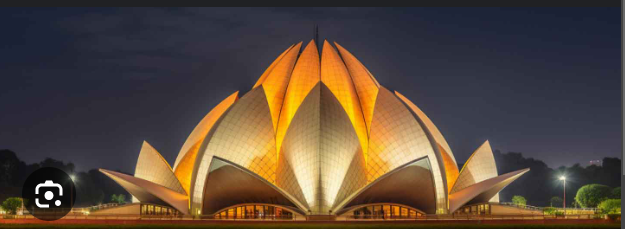
The Lotus Temple, an architectural marvel located in Delhi, India, is renowned for its striking lotus-shaped design, symbolizing purity and peace. Completed in 1986, this Bahá’í House of Worship stands out for its unique structure, consisting of 27 pristine white marble petals arranged in clusters of three to form nine sides. The temple’s design, inspired by the lotus flower, represents the unity of all religions and serves as a universal space for meditation and reflection. Surrounded by lush gardens and reflecting pools, the Lotus Temple provides a serene environment that invites visitors from diverse backgrounds to experience tranquility and spiritual harmony. Its elegant simplicity and commitment to inclusivity make it a testament to both innovative design and universal values.
GURUDWARA BANGLE SAHIB
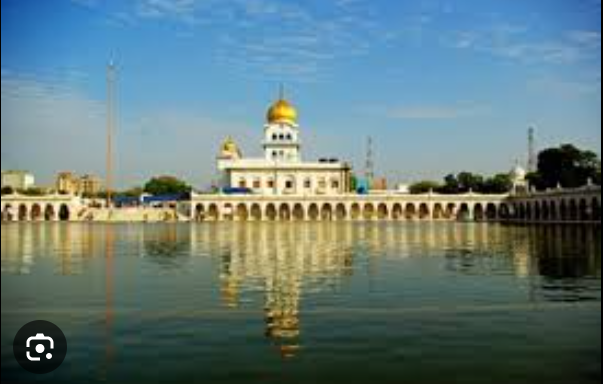
Bangla Sahib Gurudwara, situated in the heart of Delhi, is a prominent Sikh temple renowned for its historical and spiritual significance. Established in the 17th century, the Gurudwara is dedicated to Guru Har Krishan, the eighth Sikh Guru, who is remembered for his compassion and healing during a smallpox epidemic in the city. The architecture of Bangla Sahib reflects traditional Sikh style, featuring a striking golden dome and an elegant white marble facade. The Gurudwara is not only a place of worship but also a hub of community service, offering free meals through its langar (community kitchen) to thousands of visitors daily. Its serene environment, vibrant community activities, and deep-rooted sense of charity make it a central spiritual and cultural landmark in Delhi.
JAMA MASJID (DELHI)

Jama Masjid, one of the largest and most impressive mosques in India, stands majestically in Old Delhi. Commissioned by Mughal Emperor Shah Jahan in the mid-17th century, this grand structure exemplifies the architectural splendor of the Mughal era. The mosque is renowned for its vast courtyard, which can accommodate up to 25,000 worshippers, and its striking red sandstone and white marble construction. Dominated by three towering domes and flanked by two imposing minarets, the Jama Masjid features intricately designed arches and elegant calligraphy. The mosque’s spacious prayer hall is adorned with exquisite marble inlays and elegant chandeliers, creating a serene atmosphere for worship and reflection. The Jama Masjid not only serves as a major religious site but also as a vibrant center of cultural heritage, attracting visitors from around the world who come to admire its architectural beauty and experience its historical significance.
.
QUTUB MINAR (DELHI)

Qutub Minar, standing tall in the Qutub Complex of Delhi, is one of India’s most remarkable historical landmarks. Constructed in 1193 by Qutb-ud-din Aibak, the founder of the Delhi Sultanate, this towering minaret reaches a height of 73 meters (240 feet) and is the tallest brick minaret in the world. Made of red sandstone and adorned with intricate carvings and inscriptions in Arabic, the Qutub Minar is a stunning example of Indo-Islamic architecture. The minaret is part of a larger complex that includes the Quwwat-ul-Islam Mosque and the Iron Pillar of Delhi, renowned for its rust-resistant properties. The Qutub Minar, a UNESCO World Heritage Site, not only reflects the architectural innovation of its era but also serves as a poignant reminder of the rich cultural and historical legacy of Delhi.
HUMAYUN'S TOMB (DELHI)

Humayun’s Tomb, a UNESCO World Heritage Site located in Delhi, is a masterpiece of Mughal architecture and a precursor to the Taj Mahal. Built between 1565 and 1572, this grand mausoleum was commissioned by Humayun’s widow, Empress Hamida Banu Begum. The tomb is renowned for its striking use of red sandstone and white marble, set within a beautifully landscaped Mughal garden. Its architectural design features a large, dome-shaped structure with intricate inlays and geometric patterns, reflecting the early development of Mughal architectural style. The tomb is surrounded by lush gardens, water channels, and a series of smaller tombs, creating a serene and harmonious environment. Humayun’s Tomb not only stands as a tribute to the Mughal emperor but also as a significant influence on subsequent Mughal architecture, including the Taj Mahal. Its historical and architectural significance continues to attract visitors from around the world, offering a glimpse into the grandeur of Mughal India.
NATIONAL MUSEUM (DELHI)
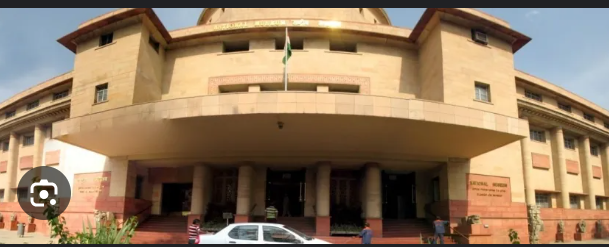
The National Museum in Delhi, one of India’s premier cultural institutions, is a treasure trove of the country’s rich heritage. Established in 1949, the museum boasts an extensive collection spanning over 5,000 years of Indian history. Its exhibits include a diverse range of artifacts such as ancient sculptures, intricate jewelry, and historical manuscripts, showcasing the artistic and cultural evolution of India. Key highlights include the Harappan Civilization artifacts, the Ashoka Pillar, and the exquisite collections of Indian miniature paintings and Buddhist art. The museum is housed in a stately building designed in the early 20th century and provides visitors with a comprehensive overview of India’s historical, artistic, and cultural legacy through its meticulously curated galleries. It serves as an invaluable resource for scholars and a captivating experience for tourists seeking to understand the depth and diversity of India’s past.
RASHTRAPATI BHAWAN
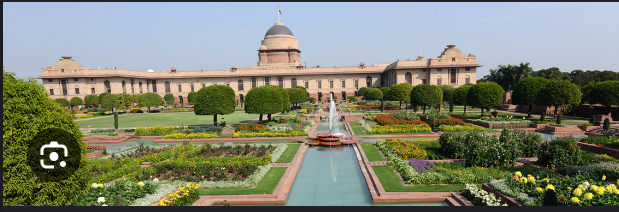
Rashtrapati Bhavan, the official residence of the President of India, is an iconic symbol of the nation’s political and historical heritage. Located at the heart of New Delhi, this grand building was designed by British architect Edwin Lutyens and completed in 1929. Its architecture is a blend of Mughal and Western styles, featuring a magnificent dome, expansive courtyards, and sprawling gardens. The Rashtrapati Bhavan’s design includes 340 rooms, reflecting the grandeur and complexity of its role. The surrounding Mughal Gardens are renowned for their beauty, with seasonal displays of flowers and intricate landscaping. Open to the public on special occasions, Rashtrapati Bhavan not only serves as the President’s residence but also as a venue for official ceremonies and state functions, embodying the ceremonial and democratic spirit of India.
AKSHARDHAM MANDIR

Akshardham Mandir, located in Delhi, is a spectacular Hindu temple complex that stands as a testament to India’s rich cultural and spiritual heritage. Opened in 2005, this modern marvel was built by the Bochasanwasi Akshar Purushottam Swaminarayan Sanstha (BAPS) and is renowned for its intricate and ornate architecture, blending traditional Hindu craftsmanship with contemporary techniques. The main temple, constructed from pink sandstone and white marble, features a grand central dome and intricately carved sculptures depicting scenes from Hindu scriptures and mythology.
The temple complex includes the Swaminarayan Akshardham Cultural Complex, which encompasses lush gardens, the Yagnapurush Auditorium, and an impressive exhibition hall. The exhibitions showcase various aspects of Hindu philosophy and history through engaging multimedia presentations. A highlight of the complex is the Sahaj Anand Water Show, which combines music, light, and water effects to narrate ancient Indian tales in a mesmerizing fashion. Akshardham Mandir offers visitors a profound spiritual experience while celebrating the artistic and cultural achievements of India.

